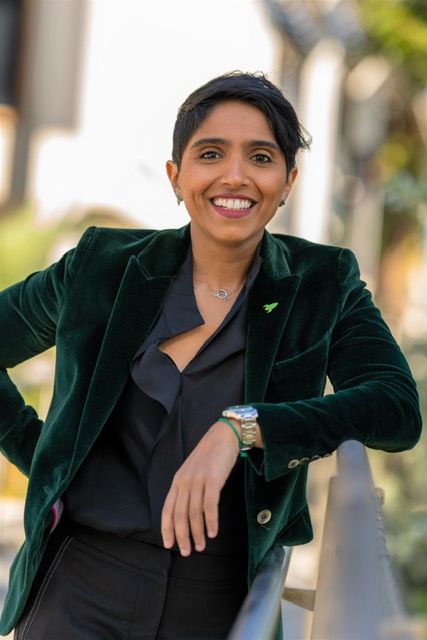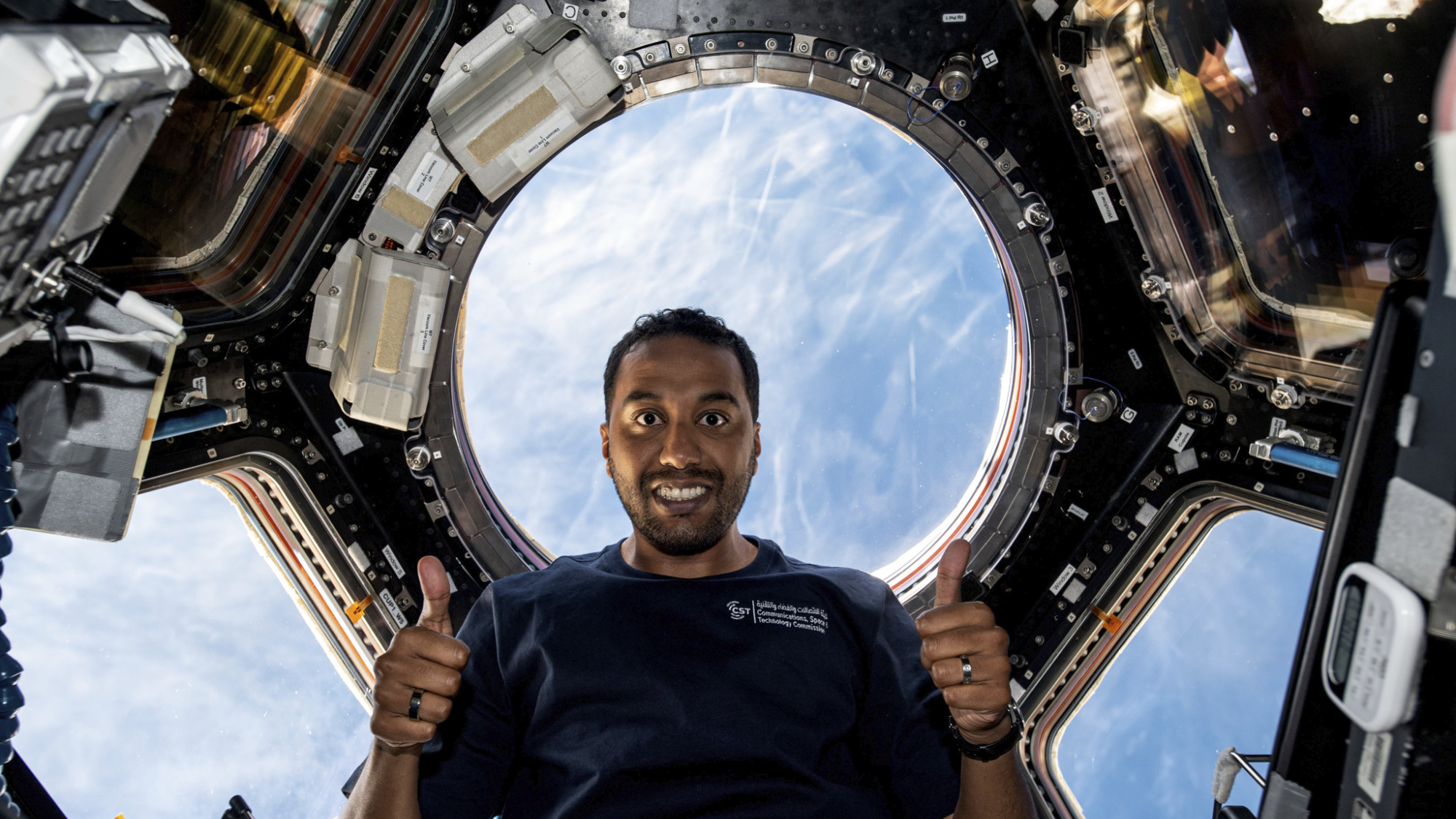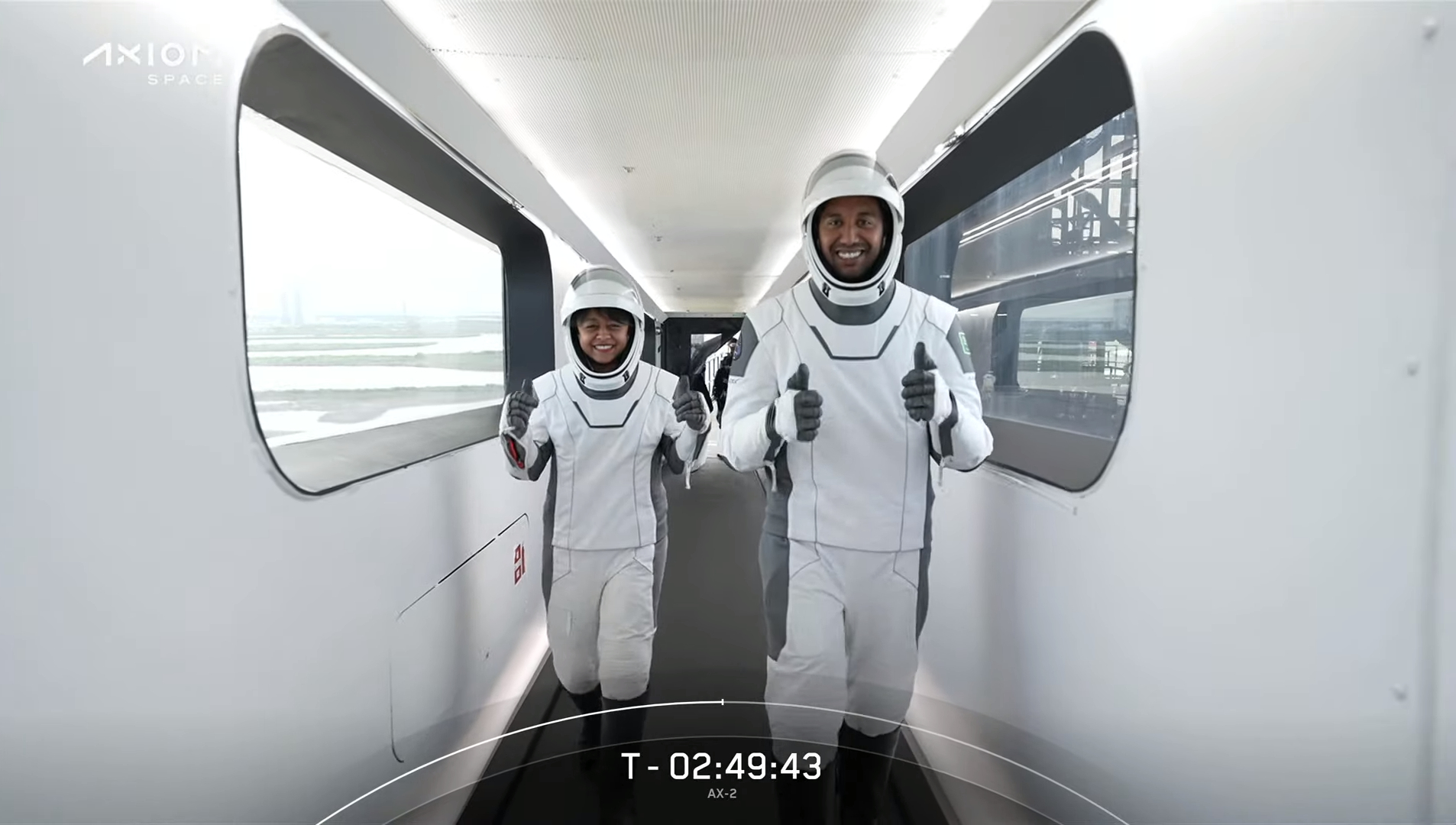Saudi Arabia has ambitious plans for space. Its astronauts on SpaceX's private Ax-2 mission are just the start, official says

For the first time ever, two Saudi Arabians are living and working on the International Space Station (ISS).
Ali AlQarni and Rayyanah Barnawi launched to the orbiting lab last Sunday (May 21) on Ax-2 mission, a four-person private mission operated by the Houston company Axiom Space. The duo are just the second and third Saudis to reach space, and Barnawi is the first woman from the kingdom ever to make it to the final frontier.
AlQarni, Barnawi and their two Ax-2 crewmates — record-breaking former NASA astronaut Peggy Whitson, the mission's commander, and paying customer John Shoffner — will spend about eight days aboard the ISS before coming back down to Earth in their SpaceX Crew Dragon capsule, which is named Freedom.
Related: SpaceX launches Ax-2 private astronaut mission to station
Read more: Ax-2 private spaceflight with SpaceX: Live updates
Ax-2 is a big deal for commercial spaceflight — it's just the second private astronaut mission to the ISS, after Axiom's Ax-1 in April 2022 — and for Saudi Arabia, which aims to build momentum from the experience and establish a bigger footprint off Earth.
Space.com caught up this week with Mishaal Ashemimry to discuss the significance of Ax-2 to Saudi Arabia and the nation's plans for a bright spaceflight future. Ashemimry is a great person with whom to discuss such topics: She's a Saudi-American aerospace engineer who serves as special adviser to the CEO of the Saudi Space Commission and vice president for diversity initiatives at the International Astronautical Federation. The following conversation has been edited for length.

Mishaal Ashemimry is an aerospace engineer, pilot and speaker who serves as the Special Advisor to the CEO of the Saudi Space Commission, which oversees the space program for the Saudi Arabia. She began her own rocket company at age 26 and was named Inspirational Woman of the Year in 2015 at the Arab Woman Awards. In 2018, she received the Award for Scientific Achievement from the Saudi King Salman bin Abdulaziz Al Saud.
Space.com: So, how does it feel to have the first two Saudis on the International Space Station?
Breaking space news, the latest updates on rocket launches, skywatching events and more!
Mishaal Ashemimry: It's definitely an historic moment. Everybody was excited. When we were attending the [Ax-2] launch, you know, our hearts were pounding. It's an inaugural mission that opens up the door for our human spaceflight program. It's meant to be a sustainable human spaceflight program, which is a strategic program, part of the national space strategy.
Space.com: Could you talk a little bit about what that strategy entails? I mean, this is the first mission to send Saudis to the space station, but it's not going to be the last, right?
Ashemimry: Correct. So, our intention is that our human spaceflight program will have two elements to it. The first element is conducting science that benefits all humanity. The second element, it has impacts on our human capital and our technical skills and, obviously, an inspirational aspect.
Every single human spaceflight program in every country is a matter of national pride; it makes people really proud for the country's achievements. But it also has direct and indirect impacts on human capital and the growth of the sector. And the beauty of a human spaceflight program, especially when you talk about the experiments, is that it brings non-space sectors into space, because some research may not necessarily be space-oriented.
For example, in pharmaceutical research, they can capitalize on the microgravity environment and the conditions in space in order to understand protein crystalline structures that you can create to produce medicine. So it's non-space sectors that then capitalize on the space environment to push the envelope of science. It will pull a lot of science from different fields into it and will facilitate the advancement of those fields, which will then have an impact on growing the human capital in Saudi and increasing the technical skill set, which is important.
Space.com: Yeah, and research is a pretty big part of Ax-2. There are roughly 20 scientific experiments on this mission, and 14 of them are led by principal investigators in Saudi, right?
Ashemimry: Yeah, absolutely. So, 11 scientific experiments, and then three scientific outreach.
Six [of the science experiments] are focused on human health — specifically, the nervous system on a molecular, cellular and tissue level. Four experiments are focused on cell science, addressing inflammatory response in space and how to treat it, and that has an implication on cancer. And then there's one experiment that's looking at cloud seeding in space, which is kind of unique because no one has ever done this before for space. Essentially, it informs creating artificial rain for low-gravity environments, such as the moon and Mars. This is the first experiment ever to focus on that.
The scientific outreach, there are three experiments. The first experiment is called Liquid Fireworks. The idea is, thousands of students on the ground will be comparing their results terrestrially to in space, basically looking at the behavior of fluids — the effects of polarity on the motion of fluids in space versus on the ground.
The second experiment is what we call Space Kite. The idea here is comparing the aerodynamics of the space kite inside the ISS, where there is a microgravity environment, versus what happens on Earth to see qualitatively how the behavior is different on the ground and in space. The third experiment, which is one of my favorites, is the Heat Transfer Experiment. On the ground, there's three modes of heat transfer: conduction, convection and radiation. But in space, you only have one, which is radiation. So, students will compare the rate of change in the heat that happens terrestrially versus what happens in space, because the astronauts will have a vacuum chamber with a heated element. The vacuum there is meant to mimic the outside environment of space.
With all these outreach programs, there's a curriculum that is being taught to the students who will participate, and they have access to this information and what the implication of those experiments is, in terms of designing a spacecraft and so forth.
Related: How out-of-this-world STEM education is transforming schools
Every single human spaceflight program in every country is a matter of national pride
-- Mishaal Ashemimry
Space.com: Speaking of outreach, what is your sense of how this mission has engaged people in Saudi? Do you have any measures of that? Or is it just a general feeling of, you can sense the excitement in the air?
Ashemimry: The live broadcast of the launch was all over national TV in Saudi. In addition, we had several events across Saudi cities with gigantic screens to get people to engage together and share their emotions with each other.
It was a moment in which everybody was unified by the pride in sending those astronauts, and it had a really positive effect across Saudi. And then with the student outreach: The students have kits that they were given with the three different topics that I mentioned. There will be a live event with the students and the astronauts in which the astronauts will conduct the same experiment the students are doing, and they will compare in real time their results with the astronauts' results, and they will have an opportunity to engage with the astronauts and ask questions. This will be across all of Saudi, with thousands of students participating such that they have a maximum effect.
Space.com: People talk a lot about the Apollo moment that we had here in the U.S. There are all these aerospace engineers and scientists of a certain age who point to the Apollo missions, especially Apollo 11, and say that's one of the main things that inspired them to go into science. Is that sort of reaction what you're hoping to engender with your participation in Ax-2?
Ashemimry: Absolutely. I think the onus is on us to ensure that the younger generation is inspired. I always say there are a few different types of people. Some are born knowing exactly what they want to do, and those are rare. And then there are people that need to see something or engage with the world in order to discover what they want to do. So these moments, I think, are very impactful on an individual level, on a global scale, to inspire people and to get them to figure out what it is they want to do — but also to shed light on how exciting space is.
Space.com: How do you see Saudi Arabia's future in space unfolding? Do you hope to do another Axiom-like mission as the next step?
Ashemimry: As I mentioned earlier, the human spaceflight program is meant to be a sustainable program. Missions will depend on what opportunities come along in the future. But this is just the inaugural mission in the start of this program, and there'll be continued participation in future missions for sure.
Because, you know, you want to contribute to science for the benefit of all humanity. You can't just do it once. You've got to do it many times. And not only that, but some experiments require an iterative process. You start with a specific type of experiment, you get data, you learn how to expand that research further, and so forth. So some experiments require multiple missions to come to fruition.
Space.com: Over the longer haul, do you see Saudi being involved in private space stations and those sorts of opportunities? We're looking at 2030 for the end of the ISS, but there could be a couple of private space stations up and running by then. Do you want Saudi Arabia to have a presence on those sorts of outposts?
Ashemimry: It remains to be seen what happens in terms of the CLDs, or commercial LEO [low Earth orbit] destinations. But Saudi, and the entire space program anywhere in the world, is a collaborative effort. It's not just one country doing everything — with some exceptions, I have to say — but it generally is collaborative in order to push the envelope. So in some cases, absolutely. It remains to be seen as to who's going to be doing what and who you're going to partner with. But, for sure, space is collaborative, and we intend to participate in that collaboration.
Our participation is meant to benefit everybody. Because whatever science you produce in space, you're supposed to share it with the general public and push the envelope with technology and science. Our intention is that we benefit all of humanity.

Michael Wall is a Senior Space Writer with Space.com and joined the team in 2010. He primarily covers exoplanets, spaceflight and military space, but has been known to dabble in the space art beat. His book about the search for alien life, "Out There," was published on Nov. 13, 2018. Before becoming a science writer, Michael worked as a herpetologist and wildlife biologist. He has a Ph.D. in evolutionary biology from the University of Sydney, Australia, a bachelor's degree from the University of Arizona, and a graduate certificate in science writing from the University of California, Santa Cruz. To find out what his latest project is, you can follow Michael on Twitter.



